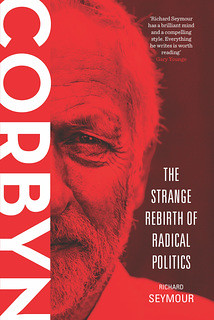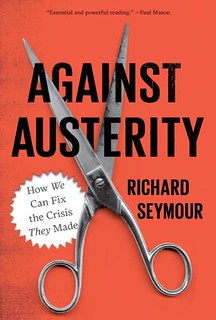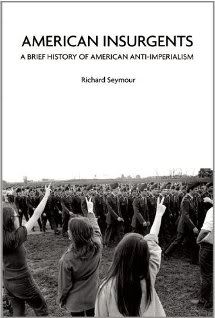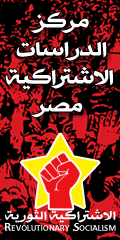Monday, July 27, 2009
Rwanda, the RPF, and the myth of non-intervention posted by Richard Seymour

Our narrative does not conveniently begin on the night of April 6-7, 1994, following the assassination of Habyarimana, when the first massacres were reported by observers. It doesn't begin with the invasion of Rwanda by armed Tutsi exiles from Uganda in 1990, either. As usual, a much wider historical perspective is called for. As the origin of the 'ethnic'* conflict in colonial rule has already been discussed here, though, we can confine ourselves to a number of simple points to start from. (And if you really want a good account of that history and its implications, see Mahmood Mamdani's When Victims Become Killers, Princeton, 2001). First, Belgian rule had created a sort of bipolar order of ethnicity, in which a minority of Tutsis were integrated into the elite, while most Hutus were subject to degrading forms of force labour, including corvée. Secondly, the Tutsi diaspora was created by the overthrow of a monarchical ruling caste after the defeat of Belgian rule, and the repressive policies pursued by the new Hutu rulers. Thirdly, institutional discrimination against the Tutsi minority was accompanied by several refugee waves in response to state repression: in 1959-1961 immediately after the overthrow of the Belgians; in 1963-64 after an attempted insurgency by Tutsis from Burundi and Uganda, which the government responded to with violent repression; and in 1972-1973, just before Habyarimana's coup d'etat, during the genocide against Hutus in Burundi. The latter was the result of an attempt by a failing regime to brand itself as a friend of Hutus, and was effectively aborted by the coup.
Tens of thousands of Tutsis had been killed in these waves of repression, and hundreds of thousands driven out. For approximately two decades, though, that violence more or less abated. Most of the repression under Habyarimana was class-based. Nonetheless, the forms of institutional discrimination mattered enough to maintain certain forms of separation, discouraging intermarriage for example - if a Hutu's daughter married into a Tutsi family, it was sure that she would suffer from lack of education, jobs and prospects. And Habyarimana did ban the return of refugees based in Uganda in 1986. (See Catherine Newbury, 'Background to Genocide: Rwanda', Issue: A Journal of Opinion, Vol. 23, No. 2, Rwanda, 1995; Mamdani, When Victims Become Killers, pp. 3-18; Mamdani, 'From Conquest to Consent as the Basic of State Formation: Reflections on Rwanda', New Left Review, March-April 1996).
The exiles in Uganda also faced repression and expulsions, particularly under Obote's two presidencies. For that reason a minority allied with the Idi Amin regime from 1971 to 1980, and then with Yoweri Museveni's National Resistance Movement which overthrew the second Obote presidency in 1985. It was in this period that the Rwandese Alliance for National Unity (RANU) was formed as the precursor to the Rwandan Patriotic Front (RPF). Representing a minority of the exiles, this movement initially tried to build a broad movement that could transform the Rwandan state. They articulated their goals in a quasi-marxist language, though this was later dropped, expressing what they believed were potentialyl popular, liberatory aims. By 1987, RANU was still trying to find a mass base, emphasising that it was 'non-political' and merely wanted to unite all Rwandans. It was in that spirit that it rebranded itself the Rwandan Patriotic Front and restricted its agenda to eight core aims, including democracy and national unity. But in private, it seems, the leadership had settled on a military option. And by 1988, Tutsis integrated into the Ugandan army were openly preparing to invade Rwanda. (Alan J Kuperman, 'Explaining the Ultimate Escalation in Rwanda: How and Why Tutsi Rebels Provoked a Retaliatory Genocide', delivered to the American Political Science Association in August 2003; 'Wm Cyrus Reed, 'The Rwandan Patriotic Front: Politics and Development in Rwanda', Issue: A Journal of Opinion, Vol. 23, No. 2, Rwanda, 1995; Mamdani, 2001, pp 159-185). Increasingly, the RPF had became a project for conquering Rwandan state power. The question is, how did this happen? Part of the explanation is that the victory of the NRM in Uganda had proven that a small, self-sustaining military force could defeat an internationally recognised government. But this could not have become a successful strategy had the RPF not became the proxy army of United States intervention in Rwanda.
Increasingly, Museveni was under pressure to expel Rwandans from senior positions in the national government, and the sabre-rattling of the RPF was becoming a liability. For that reason, he dismissed General Rwigenya from his position of army chief-of-staff in November 1989, and relieved General Kagame of his title of military intelligence chief in Kampala. Both of these were RPF leaders, but it was Kagame who then made his way to Fort Leavenworth in Kansas to be trained by the US military. Having spent months in training by Special Forces, he departed to assist the invasion of Rwanda, already in progress. Kagame was not the only RPF member to be trained under the IMET programme, but as the effective leader of the invasion following Rwigenya's death on the battle field, his presence there has been widely noted. (According to journalist and former naval attache Wayne Madsen's testimony to Congress, in 1999, Kagame's subordinates were also given training at Luke Air Force base in Arizona, in such matters as the deployment of surface-to-air missiles.) As far as I can gather, however, the main way in which the US supported the RPF was through the application of its diplomatic muscle - with important consequences, as we will see. The RPF's martial adeptness and armaments mainly derived from the support it received from the Ugandan military (another US ally).
Initiatives undertaken between Museveni and Habyarimana to prevent an invasion resulted in pledges of political liberalisation, the legalisation of opposition parties, and proposals for the staged return of refugees, but these were flatly ignored by the RPF. In fact, it was a trifle inconvenient for them that the Rwandan state was suddenly prepared to, cautiously, address the issues that supposedly motivated the insurgents, for they were no longer interested merely in reforms: they wanted a share of state power. Reportedly, the RPF even went to the extent of assassinating Tutsis who supported compromise deals. The steps taken by the Habyarimana regime could have something to do with the timing of the invasion, which was partially intended to thwart compromises of this kind. (Kuperman, 2003; Newbury, 1995). Three days before the invasion, Habyarimana declared before the UN that Rwanda would grant citizenship documents and travel rights to refugees, and that it would repatriarte those who did return. Again the RPF did not respond. (Mamdani, 2001, p 159). I suppose it's worth highlighting that at the time, the RPF were the 'good guys' as far as the British press were concerned. A report in the Independent claimed that "The rebel movement ... aims to overthrow President Habyarimana and his clique ... and replace it with a democratic, honest non-tribal regime." Ah, bless.
When the invasion was launched, the RPF discovered to their chagrin that Hutu peasants weren't altogether eager to 'liberated', and generally fled from guerilla zones. Habyarimana had responded to the invasion by locking up tens of thousands of political opponents, both Hutu and Tutsi, and launching a violent crackdown that killed hundreds of civilians. This didn't work to the RPF's advantage since they had no base and most, barring a section of the Hutu opposition, resented them for bringing this repression down on them. The RPF began to rely on coercion, driving thousands of refugees into Uganda (irony alert) to create free-fire zones, and engaging in forced recruitment. They could not, unlike Museveni's NRA, form alternative structures of government based on 'resistance councils' because they lacked a mass base. Most Rwandans suspected that the RPF was about to re-impose Tutsi domination, a fact that Hutu nationalists could use to their advantage in opposing Habyarimana's efforts at compromise. (Mamdani, pp 188-189).
It was often assumed in the early literature on the genocide that a lengthy and bloody battle with the Rwandan military was completely unanticipated by the RPF. Thus, Rene Lemerchand wrote: "On the eve of the October 1, 1990 invasion, no one within the RPF had the slightest idea of the scale of the cataclysm they were about to unleash." (Lemerchand, 'Rwanda: The Rationality of Genocide', Issue: A Journal of Opinion, Vol. 23, No. 2, Rwanda, 1995). In retrospect, this was false - perhaps it was an image that the RPF preferred to project at that time. However, since then Alan Kuperman of Johns Hopkins has interviewed a number of senior RPF members who participated in the invasion and subsequent war. He writes that, in fact: "Rwigyema and other senior rebel officials anticipated a protracted struggle against a more numerous and better equipped Rwandan army." (Kuperman, 2003). But just as the RPF was being forced into retreat and looked weakest, the US stepped in and told the Habyarimana government that it should treat the RPF not as an invading army but as a legitimate opposition. This wasn't just friendly advice: it came with America's immense clout, including its ability to disburse aid and loans. In response to Rwandan concessions, Bush's ambassador to Rwanda announced an increase of aid from $11.6m to $20m. (Barrie Collins, 'New Wars and Old Wars? The Lessons of Rwanda', in David Chandler, ed., Rethinking Human Rights: Critical Approaches to International Politics, Palgrave Macmillan, 2003, p. 161)
In stressing the concessions and negotiations available to the RPF, I will not imply that the Habyarimana regime was somehow the 'nice guy' of the conflict - far from it. The pogroms and massacres unleashed by the government even in the early years of the insurgency were part of a strategy of attempting to undermine the leverage of the invaders by punishing the Tutsi population. Their sole rationale for making any concessions at all was self-preservation. But the RPF believed they could gain more, and were determined to press for maximum advantage. During the negotiations they had improved their military capability, and they now found that the world's sole superpower was backing them. They launched a new offensive in March 1992 and continued with further attacks throughout the year. At the behest of the US, the Habyarimana government intensified negotiations at Arusha in July 1992. A seven month ceasefire ensued, broken by the RPF in February 1993. Claiming that they were responding to pogroms and massacres of Tutsi civilians by the Rwandan military and death squads (which certainly happened), they doubled the amount of territory under their control, and came within 20 miles of the capital, killing Hutu civilians as they did so and displacing about a million people.
At this point the Habyarimana regime was faced with an internal opposition that considered that he had conceded far too much to the RPF. This sentiment was galvanising the nationalists, increasing their standing among the general population. And after the RPF's attacks in Spring 1993, even those elements of the Hutu opposition that were sympathetic to the RPF expressed a feeling of betrayal, and were forced on the retreat. Faustin Twagiramungu, the leader the opposition MDR party, criticised the RPF for being exactly like Habyarimana's party, seeking total control rather than a negotiated settlement. Even so, the military successes of the RPF ensured further concessions, and the resulting agreement at Arusha was nothing short of a coup for the Front. If the accords had actually succeeded, the RPF would have been given a total of five cabinet seats out of a total of 21, and eleven seats in the transitional national assembly out of a total of 70, putting it on par with the ruling MNRD. This reflected military leverage, not popular support. During the Arusha negotiations, moreover, successful offensives by the RPF enabled to demand that their representation in the army by increased from 40% to 50%. (they gained 50% representation in the officer corps, but 40% in the proposed combined army). (Kuperman, 2003; Collins, p 166).
US negotiators were fully aware that such concessions were impossible for Habyarimana to defend, but insisted that he offer them or risk losing the support of the 'international community' (the US). If he lost the 'international community', he would lose aid, and potentially lose the war. This is a crucial point: the US knew that nothing was surer to drive hardline factions in the army and state into a paranoid abyss than forcing them to accept what amounted to an effective coup. The RPF's "unceasing demand that Habyarimana hand over to them effective political and military control of Rwanda" was hardly balanced by the few concessions on their part. If Habyarimana went through with it, he was sure to wind up dead: so he did the only thing that he could be counted on to do for the sake of his own political survival. He signed, but did everything he could to avoid implementation. He coopted all the Hutu nationalist currents behind his 'Hutu Power' alliance, and - in light of ongoing attacks - could make a resonant case that success for the RPF represented an existential threat to the country's Hutu population. (This can't be reduced to the propaganda of a dying regime - it was because people could easily believe that this was what was at stake that substantial layers of the Hutu population, well beyond the small circles that planned the genocide, later participated in its execution. ) At the same time, according to former RPF officer Jean-Paul Mugabe, the RPF were advising their soldiers not to take the Arusha accords seriously and to prepare for a 'final' conflict with the Rwandan government. (Kuperman, 2003; Collins, p 167-171).
The RPF at this point had a choice, as Kuperman puts it: "They could finally make concessions in their demands for power – for example, by letting the now dominant Hutu Power wings pick the opposition parties’ representatives in the transitional government – in the hope of averting massive retaliatory violence against Tutsi civilians. Or the rebels could maintain their hard line and prepare a final military offensive to conquer Rwanda. They chose the latter." Their escalation and the atrocities that they certainly committed (especially during their final sweep to power) only assisted the invocation of an existential peril faced by the Hutu population. Even as the genocide was promulgated, they treated "retaliation against Tutsi civilians as the price of achieving" their goals "even as the price climbed much higher than expected." The Front did make some belated efforts to win over those it had expelled or mistreated, and even to try and organise some self-defence for the anticipated victims of the genocide. But that was secondary. As Kuperman argues: "the battle plan was designed to conquer the country, rather than to protect Tutsi civilians from retaliatory violence". The insurgents avoided the areas where genocide was being perpetrated, or where people were at most risk, for fear of the military costs that they would bear. Instead, they swept through the eastern half of the country, bypassing most of the fighting army units, and took the capital as the Hutu military was disintegrating. They accomplished their goal, capturing state power - though, of course, at a tremendous price.
To state the obvious, again, in stressing the RPF's responsibility for its own decisions, there is no attempt to 'balance' their conduct with that of the Hutu Power faction that promulgated genocide. The responsibility for the annihilation of 80% of the Tutsi population of Rwanda lies first and foremost with those who planned it, and those who executed it. Nothing could mitigate that responsibility. But the RPF's role was destructive, and American intervention on its behalf made it far more destructive than it might have been. And the reason for their ruthless conduct was rooted in their nature as an elitist military outfit that sought, through alliances with local and international powers, to impose minority rule on Rwanda regardless of the consequences for the Tutsi population. In fact, this is exactly what it succeeded in doing. The resulting regime continued to benefit from US military training, has become one of the closest allies of the UK and US in the continent, has been party to genocidal violence in the Congo and has violently repressed opponents. If the Rwandan Patriotic Front had been a liberation movement of the kind sought in the early RANU, with popular interests at heart, it would have shown in their strategy, their tactics of war, their relationship to the masses, and their subsequent mode of rule. It did not: they were not. If there had been no 'Western' intervention, as is often asserted, the 'civil war' that resulted from the invasion would probably have resulted in far less bloodshed. But the actual intervention that took place, so far from proving an excellent antidote to genocide, as 'Western' intervention is supposed to be, helped bring it about.
*The category of ethnicity almost always demands scare quotes. In this case it is particularly problematic since the terms 'Hutu', 'Tutsi' and 'Twa' were historically highly changeable in their meaning and tended, under colonial rule, to shade into 'racial' categories. This polysemy has had implications for the course of present history. Mahmood Mamdani recalls that: "one of the issues hotly debated in the Rwandese Alliance for National Unity (RANU), formed by refugees in Uganda in 1979, was whether the difference between Bahutu and Batutsi was one of class or ethnicity". (Mamdani, 'From Conquest to Consent as the Basic of State Formation: Reflections on Rwanda', New Left Review, March-April 1996)
Labels: colonialism, genocide, hutu, imperial ideology, imperialism, racism, rpf, rwanda, tutsi, US imperialism










